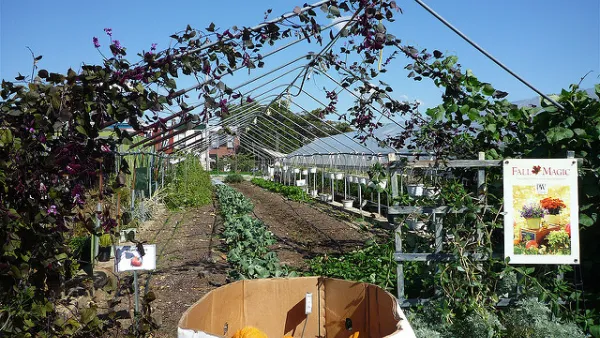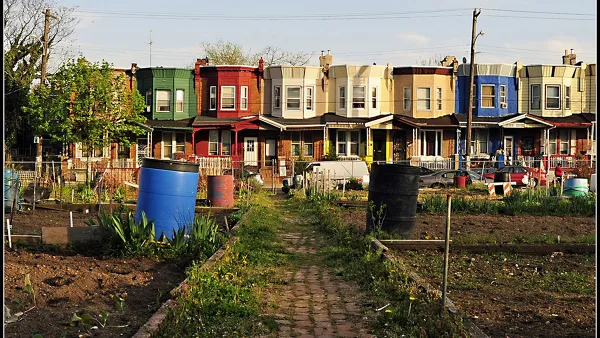Edward Glaeser adds "large-scale metropolitan farming" to a list -- which also includes historic preservation -- of barriers to densifying urban development patterns. His argument is that the latter is the greener of the two.
"All that is grassy is not green," begins Glaeser, in his most recent attack on planning efforts to implement large-scale metropolitan farming, which he believes "will do more harm than good to the environment."
Here's why:
"While neighborhoods benefit from the occasional communal garden, it is a mistake to think that metropolitan areas could or should try to significantly satisfy their own food needs. Good environmentalism is smart environmentalism that thinks through the total systemic impacts of any change. Farm land within a metropolitan area decreases density levels and pushes us apart, and carbon emissions rise dramatically as density falls."
Additionally, he cites a study which found that growing certain crops or livestock less suited for a given climate significantly increases the amount of greenhouse gas emissions and fertilizer required for growing, to the point where it is actually more environmentally friendly to grow where it is most suitable and then have the products shipped over long distances to consumers.
Thanks to Scott Ulrich
FULL STORY: The locavore’s dilemma

National Parks Layoffs Will Cause Communities to Lose Billions
Thousands of essential park workers were laid off this week, just before the busy spring break season.

Retro-silient?: America’s First “Eco-burb,” The Woodlands Turns 50
A master-planned community north of Houston offers lessons on green infrastructure and resilient design, but falls short of its founder’s lofty affordability and walkability goals.

Delivering for America Plan Will Downgrade Mail Service in at Least 49.5 Percent of Zip Codes
Republican and Democrat lawmakers criticize the plan for its disproportionate negative impact on rural communities.

Test News Post 1
This is a summary

Test News Headline 46
Test for the image on the front page.

Balancing Bombs and Butterflies: How the National Guard Protects a Rare Species
The National Guard at Fort Indiantown Gap uses GIS technology and land management strategies to balance military training with conservation efforts, ensuring the survival of the rare eastern regal fritillary butterfly.
Urban Design for Planners 1: Software Tools
This six-course series explores essential urban design concepts using open source software and equips planners with the tools they need to participate fully in the urban design process.
Planning for Universal Design
Learn the tools for implementing Universal Design in planning regulations.
EMC Planning Group, Inc.
Planetizen
Planetizen
Mpact (formerly Rail~Volution)
Great Falls Development Authority, Inc.
HUDs Office of Policy Development and Research
NYU Wagner Graduate School of Public Service





























